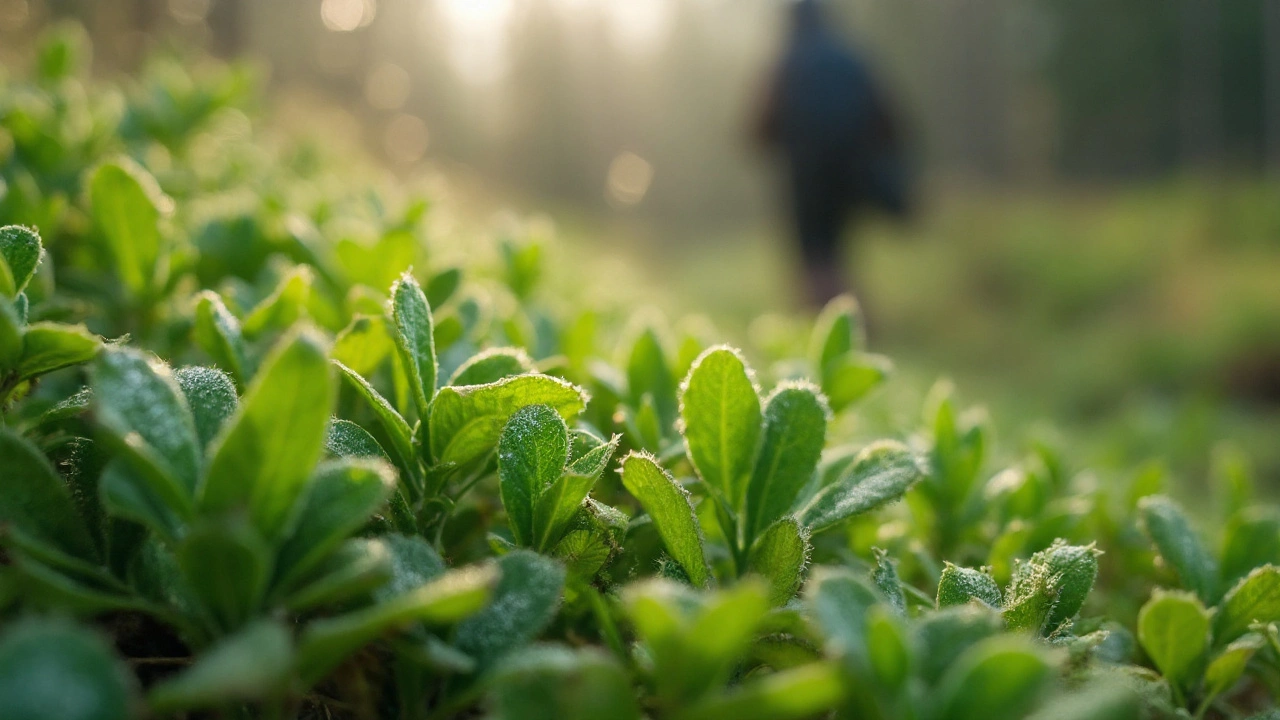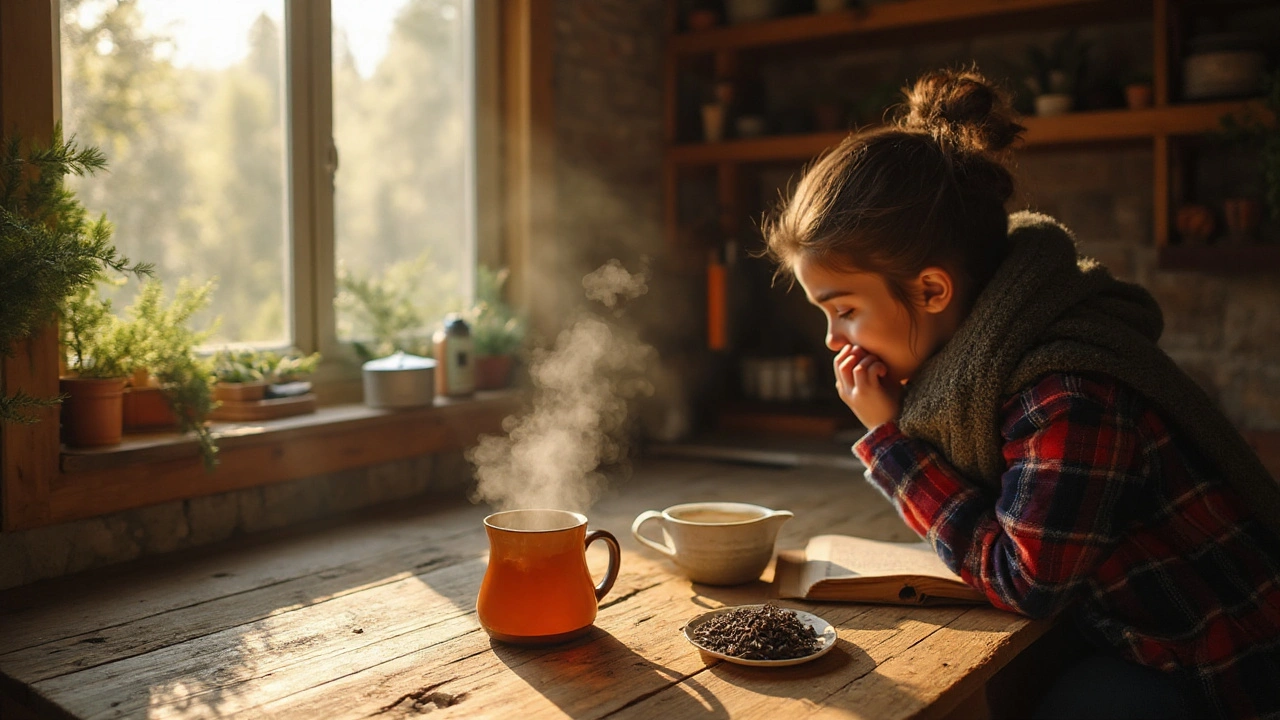If you ever wondered if old-school remedies actually work, here’s a riddle for you: which wild plant made it through centuries of folk medicine, crossed continents, and quietly showed up in modern research journals for its unexpected health benefits? Marsh tea, or Labrador tea, has this kind of staying power. This is not your average green tea from the grocery store. The leaves have been brewed in the wilds of Finland, Canada, and Russia since the time of the Vikings. In the last few years, herbalists, botanists, and anyone tired of “superfood” fads are taking a fresh look at this fuzzy-leafed plant and… being surprised.
What Exactly Is Marsh Tea? Getting to Know the Herbal Outlier
The plant goes by dozens of names: marsh tea, Labrador tea, wild rosemary, northern tea, and the official-sounding Ledum palustre (now sometimes called Rhododendron tomentosum by botanists). It grows in soggy tundra and peat bogs, usually hidden among cranberries and sphagnum moss. The leathery, evergreen leaves have a spicy-lemony scent, a bit like camphor and pine. If you rub one between your fingers, it’ll leave a sticky, resinous sap and a menthol hit in your nostrils.
Generations of Indigenous people—Cree, Inuit, Sami, and more—gathered these leaves to steep in hot water, using them for everything from easing coughs to calming fever. Russian herbal traditions go back just as far, where marsh tea was the go-to potion for long, freezing winters and the aches that followed shoveling snow.
Here’s a cool fact: marsh tea isn’t related to tea like Camellia sinensis, the source for black and green teas. It’s its own quirky thing—technically an ericaceous shrub, more closely related to azaleas or blueberries than your average cup of Earl Grey.
Don’t let its pretty flowers fool you. Marsh tea leaves contain plenty of essential oils, flavonoids, arbutin, and—this is important—ledol and palustrol, which give the herb much of its strength. Some of those compounds are what make marsh tea popular for herbalists, but also why you have to brew marsh tea right (more on that later).
The Ancient Origins and Wild Stories: How Marsh Tea Traveled the World
Stories about marsh tea are just as wild as the tundra where it grows. Vikings supposedly stuffed the leaves into bedding to fight lice. In some Scandinavian households, people crushed the leaves into vodka and called it a hangover cure. Russians would pick marsh tea and let it ferment, using it like a smoky black tea when money ran short. One story says that Canadian trappers would keep marsh tea in their packs to chew as a painkiller during hunting trips.
There’s hard science buried in these tales. According to research out of the University of Helsinki, marsh tea leaves were found in the food storage pits alongside seal bones and dried berries in ancient settlements as far back as 1000 AD. That means folks were not only drinking it, but quite possibly using it to preserve or flavor their food.
Even botanists kept their guard up with marsh tea. Mid-20th-century pharmacists in Sweden used to keep marsh tea jars out of reach behind the counter, only available by request. A little knowledge goes a long way—overuse can mean side effects, something people back then must have figured out firsthand.
The plant’s international journey didn’t stop in Europe and Siberia. When early settlers landed in North America, they adopted marsh tea for its medicinal uses. In some Canadian provinces, marsh tea was the home remedy long before commercial medicine showed up. In the US, you’ll even find it in old Appalachian herbals, where folks called it "wild rosemary."

The Science: What the Studies Are Saying About Marsh Tea’s Real Benefits
Dig into the research, and marsh tea holds more than just folklore. Finnish studies published in the Journal of Ethnopharmacology found that extracts of marsh tea have strong antioxidant activity—higher than several commercial herbal teas. Researchers from Memorial University in Newfoundland discovered antimicrobial effects against common bacteria, which gets interesting if you’re on the lookout for more natural ways to tackle infections or boost your immune system.
What about anti-inflammatory action? Studies out of Sweden in the last five years showed marsh tea reduced swelling in lab animals almost as well as low-dose NSAIDs. It’s those terpenes—ledol and palustrol again—that do most of the heavy lifting. For anyone dealing with joint aches or sore throats, this is the kind of old school knowledge that suddenly makes sense in the modern world.
Canadian researchers also looked at arbutin, a compound found in marsh tea. They found it works as a mild diuretic, similar to bearberry or uva-ursi, making the tea a useful option for urinary health (though not a substitute for doctors, obviously).
One of the most promising results? A group at the University of Manitoba tested marsh tea extracts against MRSA (the antibiotic-resistant bacteria) and found moderate inhibitory action. It’s not a miracle cure, but even a little help against tough bugs catches the eye of scientists these days.
Take a look at the most relevant findings so far:
| Research Area | Key Benefit | Notable Compounds | Lead Institution | Published Year |
|---|---|---|---|---|
| Antioxidant Activity | Reduces oxidative stress | Flavonoids, terpenes | University of Helsinki | 2023 |
| Antimicrobial | Fights bacteria (incl. MRSA) | Essential oils, ledol | University of Manitoba | 2021 |
| Anti-inflammatory | Soothes swelling, joint pain | Palustrol, ledol | Lund University | 2022 |
| Diuretic Effect | Urinary tract support | Arbutin | Memorial University | 2020 |
Of course, every study adds the same warning: marsh tea is potent, and too much can be risky—especially for kids, pregnant women, or anyone with liver problems. Mark this one firmly under "respect the dose."
How to Make Marsh Tea: Brewing Traditions and Safety Tips
You probably won’t find marsh tea at the local supermarket, but it’s not hard to track down at specialty herb shops or online. If you ever get the chance to see it wild, the simple rule is: the freshest tips, picked in late spring, make the best brew.
There’s an art to steeping marsh tea. It’s not like your regular black tea, where strong means just an extra minute. Here’s the classic, slow way:
- Use about one teaspoon of dried marsh tea leaves (enough for a full mug, but not heaping—seriously, don’t overdo it).
- Pour freshly boiled water over the leaves and let steep for five to seven minutes. Don’t boil the leaves directly.
- Strain and drink, preferably after a meal. The taste is piney, slightly bitter, and leaves a gentle numbing tingle.
Old recipes sometimes call for mixing marsh tea with black currant leaves or dried lingonberries for a softer flavor. In Siberia, people would add a spoonful of honey or a squeeze of lemon to cut the bitterness. I’ve even heard of people adding a splash of vodka, but I wouldn’t recommend that at breakfast unless you’re into the full historic experience.
Now the warnings: do not drink more than two cups a day. Those who try to use it as a detox tea, or steep double the amount, usually regret it—nausea and headaches are sure signs you’ve gone too far. Some rare allergic reactions do happen, especially if you’re sensitive to plants in the Rhododendron family. Margot, my wife, made the classic mistake of turning her first batch into a four-cup French press. The look on her face after that first sip? Priceless. Lesson learned: with marsh tea, less is more.

The Unfiltered Truth: Who Should Try Marsh Tea and What to Expect
Let’s get practical. Marsh tea isn’t for everyone. If you’re pregnant, breastfeeding, or have kidney or liver conditions, better to steer clear or talk to your doctor first. For otherwise healthy adults looking for immune boosts, more comfortable joints, or a traditional twist to their daily routine, marsh tea is worth a try—but only if you go slow and keep the doses small.
Expect a flavor that’s woodsy and intense. It won’t win over fans of fruity teas, but works well if you appreciate the old-world taste of pine, juniper, or spruce. The aftertaste leaves your mouth feeling clean, kind of like a mild herbal mouthwash. If you take it before bed, some people find it actually helps them sleep by easing coughs or that scratchy-sore winter throat.
If you want to include marsh tea in your wellness routine, try this safe routine:
- Start with one cup a day, made with a teaspoon of dried leaves.
- Keep it on rotation—don’t drink it daily for months. Three days on, a week off, is a rhythm that works for many herbalists.
- If you notice any stomach upset, headaches, or allergy symptoms, stop right away.
- Store the dried leaves in an airtight container, away from light and moisture.
There’s no FDA-approved supplement from marsh tea—yet. Most brands sell wild-harvested leaves or tinctures. Always check for the Latin name (Ledum palustre or Rhododendron tomentosum) so you know you’re getting the real thing, not an ornamental rhododendron.
Final verdict? If you’re curious about time-tested wellness traditions, marsh tea stands apart from today’s usual superfood hype. You get a taste of history and—if you treat it with respect—some solid, research-backed benefits too.





Saket Modi
August 16, 2025 AT 13:18Chris Wallace
August 17, 2025 AT 12:38Shubham Pandey
August 18, 2025 AT 13:50Elizabeth Farrell
August 19, 2025 AT 05:13Girish Padia
August 21, 2025 AT 03:04william tao
August 21, 2025 AT 20:58John Webber
August 22, 2025 AT 17:59Sheryl Lynn
August 22, 2025 AT 23:22Paul Santos
August 23, 2025 AT 14:59Eddy Kimani
August 25, 2025 AT 07:37Chelsea Moore
August 27, 2025 AT 00:07John Biesecker
August 28, 2025 AT 05:05Genesis Rubi
August 28, 2025 AT 14:57Doug Hawk
August 29, 2025 AT 12:06John Morrow
August 31, 2025 AT 10:32Kristen Yates
September 2, 2025 AT 09:56Saurabh Tiwari
September 4, 2025 AT 00:42Michael Campbell
September 4, 2025 AT 14:47